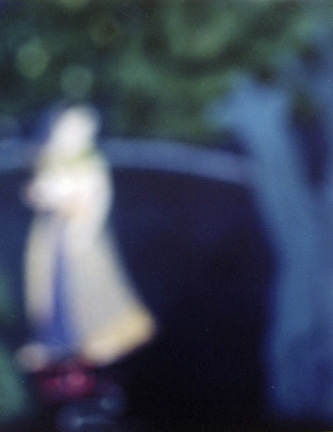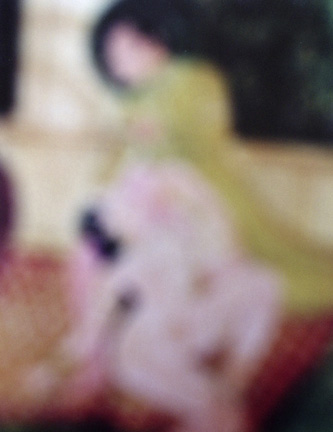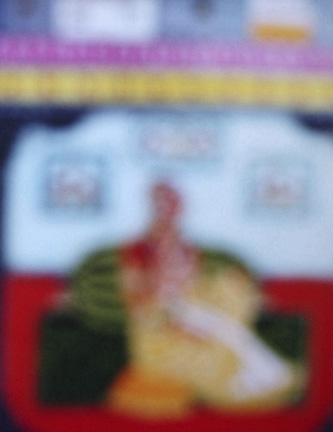Bill Armstrong, New York, USA
Bill Armstrong is a New York based fine art photographer who has been shooting in color for over 30 years. Mr. Armstrong was in a two-man exhibition, Photo Mandala, at the Philadelphia Museum of Art in 2008. In 2010, he had a mid-career retrospective at the Southeast Museum of Photography. A grid of Mr. Armstrong’s Mandalas was recently installed as a permanent exhibition in the U.S. Consulate in Mumbai. His work is featured in many museum collections including the Vatican Museum, the Victoria & Albert Museum, Philadelphia Museum of Art, Brooklyn Museum, Houston Museum of Fine Arts, Santa Barbara Museum of Art, and the Bibliotheque National de France. He has been published in numerous periodicals including The New Yorker, The New York Times, Harper’s, House and Garden and Eyemazing. Mr. Armstrong is on the faculty at the International Center of Photography and the School of Visual Arts.
Renaissance Portraits
Renaissance Portraits is a portfolio of photographs made from re-photographing reproductions of 15th and 16th century paintings with the focusing ring set at infinity.
The resulting blur investigates the nature of perception: the eye continually tries to resolve these images, but is unable to do so. It is my hope that, in the moment of visual confusion, when the psyche is derailed, the viewer may become free to respond emotionally.
The images are also a metaphor for the passage of time and the fog of history, creating a view of the Renaissance that could not have existed prior to the invention of photography and the focusing lens.
I believe the viewer is central to all portraiture; that portraiture is really about self. How one compares oneself to the subject is paramount to the experience of looking at portraits. By erasing features, dissolving personal affect, and eliminating period dress, I hope to create portraits that transcend individual personality and create archetypes for the human condition, allowing the viewer a different experience than they would otherwise have.
Finally, these images are meant to capture the light and color of the Renaissance in a new way, creating abstractions that are rhapsodies of color, meditative pieces, glimpses into a world beyond our focus, beyond our ken.

Kama Sutra
From the Infinity series
The Kama Sutra project is a reinterpretation of the Indian erotic classic. The work consists of photographs of paintings used to illustrate the 3rd century text—a text which, in itself, is an interpretation of previous texts and oral traditions. The 18th and 19th century Rajastani miniature paintings that modern editors often use to illustrate the text of the Kama Sutra were not painted for that purpose, nor do they follow the writings exactly, rather, they accompany it loosely, adding their own meanings and narratives along the way. My blurred photographs of the paintings, then, are another layer in the pentimento of interpretations of the original, each with its subsequent changes in meaning.
Defocusing throws a veil over the explicit detail of the sex act and renders the images mysterious and dreamlike. Yet, the lingering presence of the original remains and so keeps the images charged. This polarity creates a tension between the viewer’s expectations and imagination as the photographs both reveal and hold back at the same time. The eye continually tries to resolve the images, but is unable to do so, and that is unsettling. A visual paradox attends the blur: the further one moves back, the more one can make out the images, and the closer one moves in the more abstract they become. This is, of course, contrary to the normal laws of vision and undoes the idea of the miniature, which demands close attention.
The veil can also be seen as a metaphor for censorship. Growing up in New England, in a culture where sexuality tends to be hidden and private, discovery of the Kama Sutra was an eye-opening experience for me as a teenager—and to find out that the explicit imagery adorning Hindu temples was considered to be spiritual was astonishing. Perhaps my images will evoke memories which play back the forbidden excitement of adolescent discovery
On another level, the subject of the photographs is color. Extreme defocusing allows me to blend and distill colors, causing them to pulse and vibrate, so that the images retain the seductive, orgiastic feel of the originals. At the same time, as abstract color fields they become meditative pieces, glimpses into a world of pure color, beyond our focus, where sensuality and spirit meet.



Bill Armstrong in the following Museums
Vatican Museum, Rome, Italy
Victoria & Albert Museum, London, United Kingdom
Philadelphia Museum of Art, Philadelphia, USA
Brooklyn Museum, Brooklyn, NY, USA
The Museum of Fine Arts, Houston, Texas, USA
Santa Barbara Museum of Art, Santa Barbara, USA
Bibliotheque National de France, Paris, France
Books about Bill's work
Mandala, Photographs by Bill Armstrong, Introduction by Katherine Ware, Philadelphia Museum of Art, Softbound,9" x 9", 44 pages
Renaissance, Photographs by Bill Armstrong, Introduction by W.M. Hunt, Clamp Art, Softbound, 8.5" x11", 54 pages
Apparition, Photographs by Bill Armstrong, Introduction by A.D. Coleman, Clamp Art, Softbound, 8.5" x 11", 16 full color plates








